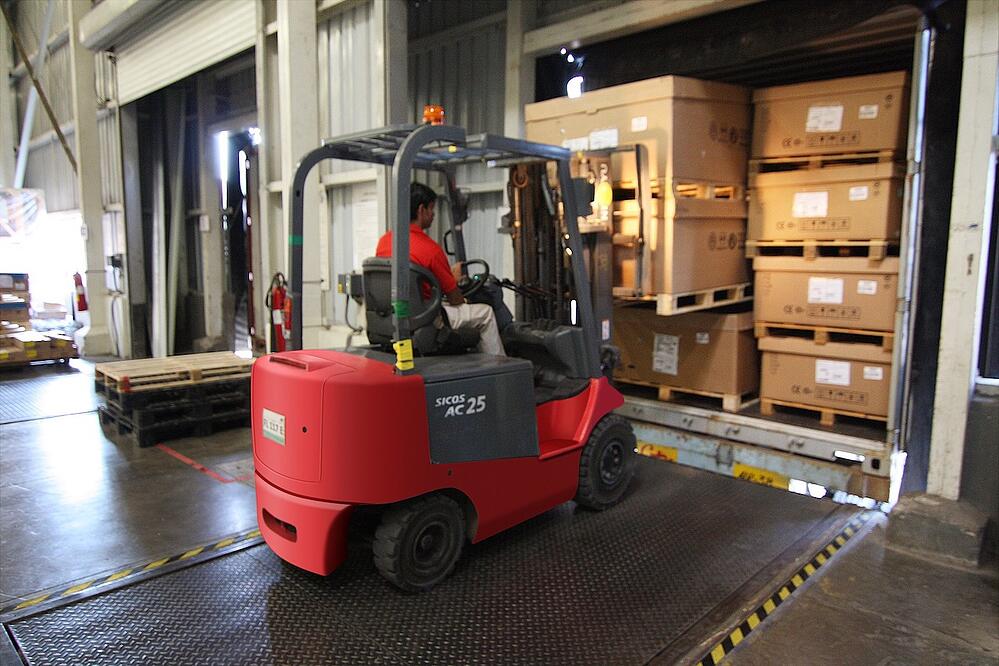The preparation of logistics pallets is usually a long and arduous process, which consists of several necessary steps: from stacking cartons to securing the pallet. To ensure the safety of operators and reduce the risk of damage to goods, it is useful to know tips for preparing logistics pallets.
Step 1: Conscious pallet selection
The first step cannot be neglected. Before you even prepare a pallet, choose it in an informed manner.
There are many types of pallets on the market. You must choose the one that suits you best, taking into account:
- size,
Estimate the volume of pallets that will suit you to minimise voids in containers and optimise the transport of goods.
- The maximum weight it can bear,
Consider both the static weight, as well as the dynamic weight (during handling) and the rack weight (when the pallet is stored on a rack).
- other special features.
For example: if you know that the pallet may be exposed to adverse weather conditions, do not hesitate to choose a plastic model.
If you need more details on the criteria for choosing a logistics pallet , take a look at our special guide to help you make an informed choice of logistics strategy.
Step 2: Evenly distribute the boxes on the pallet
Once you have chosen your pallet, you should get down to the task of laying out the boxes on it. It is worth concentrating, above all, on filling the space at the bottom of the pallet. This is done in order to protect the boxes as much as possible during transport and to avoid possible damage to the goods. A pallet box can be used for this purpose.
This is a cardboard tool that usually adapts to the size of the pallet. It allows the cartons to be placed in it and thus, maintain the maximum dimensions of the chosen logistics pallet.
Step 3: Correct stacking of cartons
The stacking of cartons on the pallet must follow very precise rules. This is all to ensure their stability and ease of handling. There are two basic rules to follow when preparing a pallet. Which ones?
- The heaviest and smallest boxes, should be placed at the bottom of the pallet. The lighter boxes are placed above them next.
- The top of the pallet should be flat, this will make it much easier to stack pallets.
The ultimate goal is to optimise the space available in the transport containers by leveling the top of the pallet as much as possible. The more efficiently the pallets are stacked, the less free space is available. For an ideal result, do not hesitate to use a pallet overlay to secure the top of the container.
Step 4: Securing the logistics pallet
At this stage, the pallet contains all the goods, distributed according to the basic rules that ensure its stability. Now it is time to secure the pallet in the best possible way . To do this, it is a good idea to start by positioning the corner pieces on the pallet.
These protect the corners from knocks and scratches, ensuring safe transportation. Next, the pallet needs to be secured with film. This can be done in two ways:
- by hand – to do this, don’t forget to bring the appropriate equipment with you,
- with the help of a packing machine – this is especially recommended when packing more than 15 pallets per day, the use of a machine will prevent musculoskeletal pains among operators. Stretch film for machine palletising can be found at this link.
By following these few simple steps, you can be sure that the pallets being transported will be loaded for handling in a robust, safe and stable manner.
If you need help choosing the right solution, please contact us via Tel: 801 55 3000* or email: poczta@rajapack.pl. Our specialists will help you choose the best packaging solution to suit your business.
*Costaccording to operator tariff.














